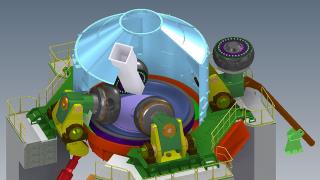When Cementos Molins Industrial of Spain needed a new RDF preparation, storage and transport facility, the cement producer turned to Vecoplan FuelTrack. The German firm put its 15 years of experience to good use in a design that not only allowed for current requirements, but also for future needs as described in this article by Boris Sassenrath, Vecoplan FuelTrack GmbH of Germany together with Ferran Griera and Gonzalo Lopez of Cementos Molins Industrial SA, Spain.
The usage of substitute fuel is one of the most necessary as well as most controversial changes in the global cement production. The German cement industry was smiled upon when it started to use waste-derived fuel in the mid-1980s to meet strict cost reduction requirements. However, the reduction in non-renewable fuels by replacing them with refused-derived fuel (RDF) equivalents offered several advantages. Around 40 per cent of production costs are attributed to energy sources and combined with the extraordinarily-high German (landfill) disposal charges, which allow an additional payment to deliver substitute fuel, the use of RDF became competitive despite the import of cheap primary fuels. In addition, the ’refuse guideline’, which prohibits the disposal of industrial wastes in Germany, further accelerated this process. Consequently, most of the German cement plants guarantee a continuous process that enables the burning of 60-80+ per cent of secondary fuel with different qualities. Therefore, it is hardly surprising that the leading suppliers of complete alternative fuels and raw materials (AFR) preparation facilities come from Germany.
